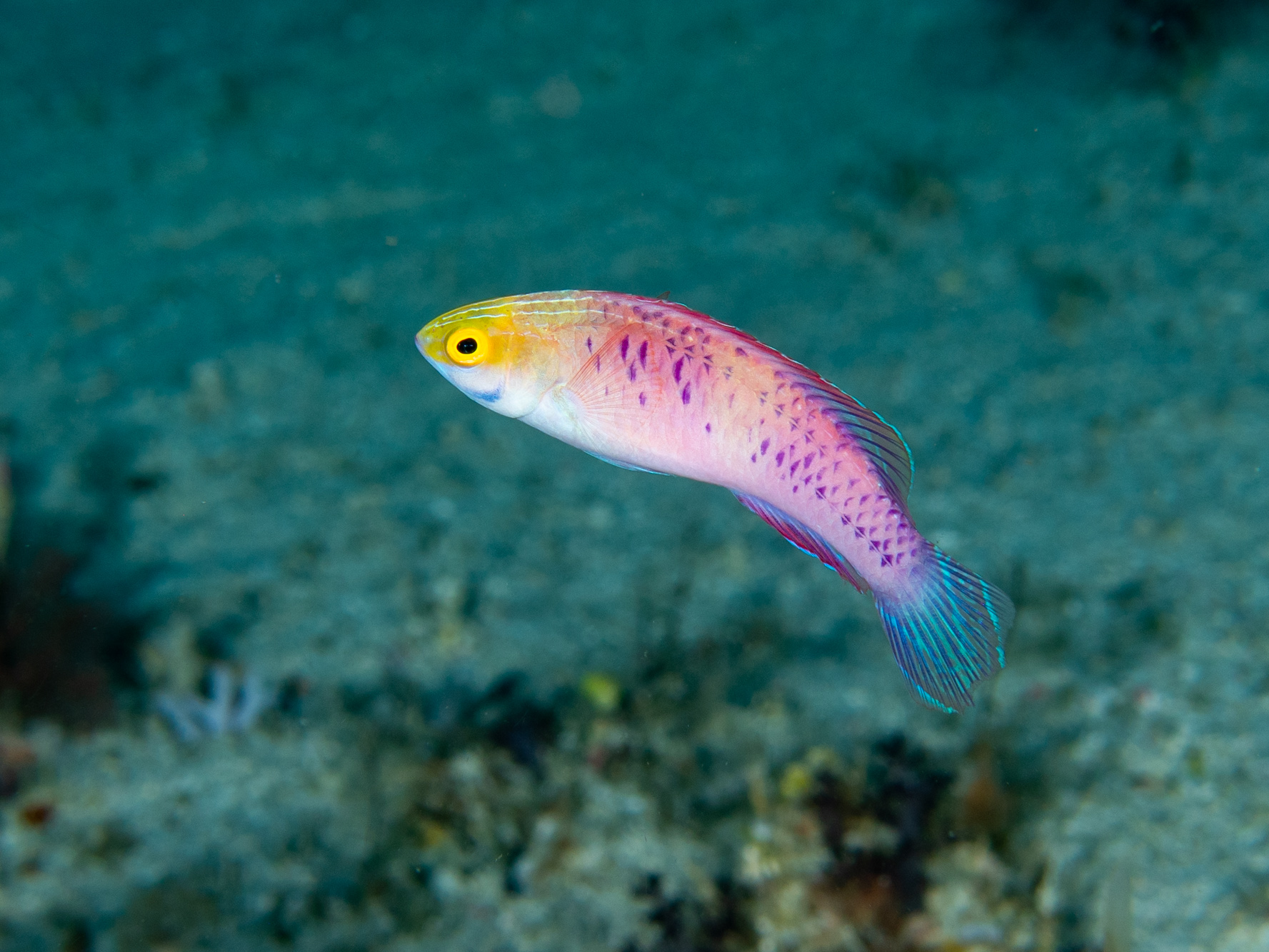- Divers have discovered a new species of wrasse – a brightly-colored marine fish – in the waters off Zanzibar, Tanzania.
- They named the fish Cirrhilabrus wakanda, after the fictional country that’s home to Marvel superhero Black Panther.
- The fish’s common name is “vibranium fairy wrasse,” after the powerful metal that lines the Black Panther’s suit. The scientists said the creature’s gleaming purple scales reminded them of the vibranium-laced outfit.
- Visit Business Insider’s homepage for more stories.
Deep in the Indian Ocean, off the coast of Zanzibar, Tanzania, swims a tiny, reclusive, and colorful fish.
Its deep purple scales, set in a chain-link pattern, reminded scientists of the high-tech suit worn by the superhero Black Panther.
So they named the previously-undiscovered, 2-inch-long fish Cirrhilabrus wakanda, after the Black Panther’s mythical African country, Wakanda.
In a new study, researchers describe the creature, whose common name is “vibranium fairy wrasse” – a moniker that gives a nod to the fantastical, near-indestructible metal that lines the Black Panther’s superhero suit.
Read More: All the futuristic technologies in 'Black Panther,' and how close they are to becoming reality
"When we thought about the secretive and isolated nature of these unexplored African reefs, we knew we had to name this new species after Wakanda," Yi-Kai Tea, lead author of the new study, said in a press release. "We've known about other related fairy wrasses from the Indian Ocean, but always thought there was a missing species along the continent's eastern edge. When I saw this amazing purple fish, I knew instantly we were dealing with the missing piece of the puzzle."
Diving to reefs up to 260 feet below the surface

The vibranium fairy wrasse prefers the remote, dimly lit waters of the "twilight zone," hiding among tropical coral reefs up to 260 feet below the surface.
That depth is far below recreational diving limits and extremely challenging for humans to access, which is why the fish has gone undiscovered for so long, the scientists said.
Tea's team, used special gear in order to dive hundreds of feet down. Their closed-circuit, multi-tank diving equipment recycles their breath to use every last bit of oxygen, but even that technology only allows them a few minutes to explore and document the deep before they have to swim back to the surface.
"When we reach these reefs and find unknown species as spectacular as this fairy wrasse, it feels like our hard work is paying off," Luiz Rocha, another study author and a diver, said in a press release.
Colorful males and females
In their deep dives, scientists were able to scoop up sample fish and return them to the surface.
Under a microscope, they analyzed the fish's scales, fins, body structure, and DNA, and determined that it was a new species previously unknown to science. Both male and female wrasses boast a vibrant purple color with a pair of facial stripes above their eyes. Their fins and tails are also a beautiful two-toned color.

Surprisingly, the wrasse's purple scales stayed vibrant and gleaming even after being preserved in alcohol for future research. Usually fish scales lose their color during that process.
The vibranium fairy wrasse joins a family of seven other fairy wrasse species in the western Indian Ocean, with some extended fishy relatives in the Pacific.
But as the planet and its oceans warm - last year was the hottest on record for the world's oceans - the coral reefs where these fish live are at risk of extinction. Oceans absorb 93% of the extra heat that man-made greenhouse gases trap in Earth's atmosphere, and warmer oceans lead corals to expel the algae living in their tissues and turn white. That process is known as coral bleaching.
As a consequence, coral reefs, and the marine ecosystems they support, are dying. Around the world, about 50% of the world's reefs have died over the past 30 years.
"It's a time of global crisis for coral reefs, and exploring little-known habitats and the life they support is now more important than ever," Rocha said. "Because they are out of sight, these deeper reefs are often left out of marine reserves, so we hope our discoveries inspire their protection."
